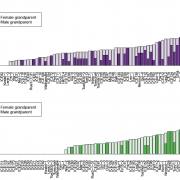On bioRxiv: Segregation distortion in Arabidopsis thaliana
The genetic architecture of recurrent segregation distortion in Arabidopsis thaliana
Danelle K. Seymour, Eunyoung Chae, Burak I. Ariöz, Daniel Koenig, Detlef Weigel
The equal probability of transmission of alleles from either parent during sexual reproduction is a central tenet of genetics and evolutionary biology. Yet, there are many cases where this rule is violated. Such violations limit intraspecific gene flow and can facilitate the formation of genetic barriers, a first step in speciation. Biased transmission of alleles, or segregation distortion, can result from a number of biological processes including epistatic interactions between incompatible loci, gametic selection, and meiotic drive. Examples of these phenomena have been identified in many species, implying that they are universal, but comprehensive species-wide studies of segregation distortion are lacking. We have performed a species-wide screen for distorted allele frequencies in over 500 segregating populations of Arabidopsis thaliana using reduced-representation genome sequencing. Biased transmission of alleles was evident in up to a quarter of surveyed populations. Most populations exhibited distortion at only one genomic region, with some regions being repeatedly affected in multiple populations. Our results begin to elucidate the species-level architecture of biased transmission of genetic material in A. thaliana, and serve as a springboard for future studies into the basis of intraspecific genetic barriers.




